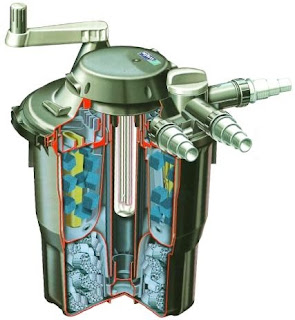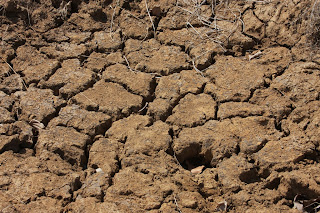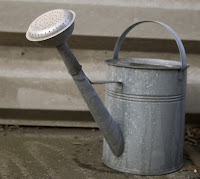 Hello everyone, we just thought we would let you all know that we have discovered more information regarding the Hozelock Bioforce Revolution.
Hello everyone, we just thought we would let you all know that we have discovered more information regarding the Hozelock Bioforce Revolution.At present we have only found one company which has listed the Bioforce Revolution on their website, and they have a wide variety of information available for us to read on the product too.
They have 3 models of the revolution which are going to be available, these sizes are a 6000, 9000 and 14000. These numbers are also relevant to the volume of water that the pond filters can handle, interestingly though is that the numbers stated are what the filter can do WITH fish, which is a first. Normally you find that a pond filter will be called for example a 3000 but when you take fish and sunlight into account it can only handle half of that number, and this has how it has been for years which has always confused people, especially beginners.
Don't worry, you are not alone, there have been plenty of people who have worked out they have 5000 litres in their pond and bought a pond filter which says it can do 5000 litres, and found out afterwards that this is without fish.
We were lucky enough to speak with someone from Hozelock who told us that they have been testing the Bioforce Revolution for a while now, and they have decided that making things more simple for the consumer was the best option all round. They have also tested these filters on ponds without fish and they can handle up to double what their figure says so for example the 14000 could handle a 28000 litre pond maximum without fish.
 The filtration will be a mix of mechanical and biological, by using foam cubes with the mechanical filtration which will be stirred up when using the winding handle and Kaldnes K3 media which will house millions of colonies of live bacteria which will be your biological filtration, breaking down waste in the water.
The filtration will be a mix of mechanical and biological, by using foam cubes with the mechanical filtration which will be stirred up when using the winding handle and Kaldnes K3 media which will house millions of colonies of live bacteria which will be your biological filtration, breaking down waste in the water.They have also started using a PLL UV Lamp in the Revolution's too, these lamps are a lot better and stronger than PLS or G8 UV lamps, so green water will be a thing of the past for your pond. The 6000 will use an 18 watt lamp, 9000 will use a 24 watt lamp and the 14000 will use a 36 watt lamp.
To coincide with the release of the Bioforce Revolutions pond filters, Hozelock are also releasing some new filters which includes the Bioforce 3000 (which can do 3000 WITH fish), which replaces the Bioforce 5500 (which can only do half that volume as per our info above) and the Bioforce 4500 which again can do this volume with fish in the pond. These smaller Bioforce's will not have the winding handle and will use a PLS lamp as they are designed for smaller ponds.
They will also be releasing these filters as Bioforce Filter Kits which will come with a pump which is optimal to the size of the filter and better value to purchase too.
It looks like the future is bright for Bioforce pond filters with this revolutionary (excuse the pun) new design. Hopefully other manufacturers will follow Hozelock and start to brand their filters with the size it they can handle with fish. One of Hozelock's main reason for doing this is because of extensive market research, in the UK you rarely find a pond without fish, so it makes sense to brand the products with the volume of water which it can handle with fish.









